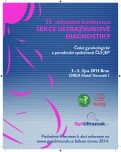The INKA Program – “tailor-made” obstetric analgesia
Authors:
A. Pařízek
Authors‘ workplace:
Gynekologicko-porodnická klinika 1. LF UK a VFN, Praha, přednosta prof. MUDr. A. Martan, DrSc.
Published in:
Ceska Gynekol 2014; 79(3): 198-205
Overview
Setting:
Department of Obsterics and Gynecology 1st Faculty of Medicine, Charles University and General Faculty Hospital in Prague.
Objective:
Predicting both the course of childbirth and the intensity of pain felt during childbirth is difficult, especially with first-time mothers. Some women tolerate birthing pains well, others require effective pain relief. Sometimes simple methods are enough, such as the presence of a partner, a relaxing atmosphere, massages, or walking, while other times the services of a birthing assistant or physician or even an anaesthesiologist are required. Choosing the right approach or methods should always be dependent on the actual situation and the individual choices and preferences of the mother.
In line with this, the INKA Program was initiated in the Czech Republic in 2013. The name is an acronym derived from the Czech words for informed (as in the expectant mother), choice (of services), quality (of services offered) and analysis (of the system of care offered). The aim of this program is to distribute information about current possibilities for decreasing the pain of childbirth to the widest possible population of expectant mothers. The information must be objective and clearly explain the benefits and risks of each analgesic method, and must not encourage or discourage any particular method.
As part of this program, a brochure titled “Birth doesn’t have to be that painful” was distributed at the end of 2013, to inform the lay public about all available methods of analgesia for childbirth in the Czech Republic. The contents of the brochure were approved by the Czech Gynecological and Obstetrical Society and the Czech Society of Anaesthesiology and Intensive Care Medicine. The INKA program encourages the personnel of birthing centres to arrange the most individual approaches possible for the needs of each expectant mother. Even women that originally had negative attitudes toward obstetric analgesics should have the opportunity for adequate and effective help at any time, if the birth does not proceed according to their original expectations.
Keywords:
pregnancy, pain relief, obstetric analgesia
Sources
1. Douma, MR., Verwey, RA., Kam-Endtz, CE., et al. Obstetric analgesia: a comparison of patient-controlled meperidine, remifentanil, and fentanyl in labour. Br J Anaesth, 2010, 104(2), p. 209–215.
2. http://www.gfmer.ch/Guidelines/Labor_delivery_postpartum/Obstetrical_analgesia_and_anesthesia.htm
3. Kranke, P., Girard, T., Lavand‘homme, P., et al. Must we press on until a young mother dies? Remifentanil patient controlled analgesia in labour may not be suited as a „poor man‘s epidural“. BMC Pregnancy Childbirth, 2013 Jul 2;13:139. doi: 10.1186/1471-2393-13-139.
4. Melzack, R. The McGill Pain Questionnaire: major properties and scoring methods. Pain, 1975, 1(3), p. 277–299.
5. Melzack, R. The myth of painless childbirth (the John J. Bonica lecture). Pain, 1984, 19(4), p. 321–337.
6. Molloy, A. Does pethidine still have a place in therapy? Aust Prescr, 2002, 25, p. 12–13.
7. ACOG Committee Opinion No. 376: Nalbuphine hydrochloride use for intrapartum analgesia. Obstet Gynecol, 2007, 110(2 Pt 1), p. 449.
8. Pařízek, A. Analgezie a anestezie u porodu. Praha: Galén, 2012.
9. Reynolds, F. Regional analgesia in obstetrics: a millenium update. London: Springer Verlag, 2000.
10. Vadivelu, N., Urman, RD., Hines, RL. Essentials of pain management. New York: Springer Science + Business Media, 2011.
Labels
Paediatric gynaecology Gynaecology and obstetrics Reproduction medicineArticle was published in
Czech Gynaecology

2014 Issue 3
Most read in this issue
- Diagnostic algorithm in pregnancies of uncertain viability or unknown location – a review of the latest recommendations
- Myo-inositol in the treatment of polycystic ovary syndrome
-
Prenatal diagnosis of skeletal dysplasia in first trimester of pregnancy
X-linked dominant chondrodysplasia punctata - HELLP syndrome complicated by liver rupture – case report
